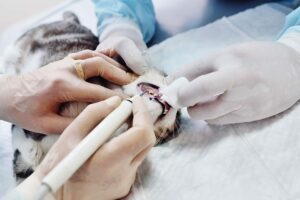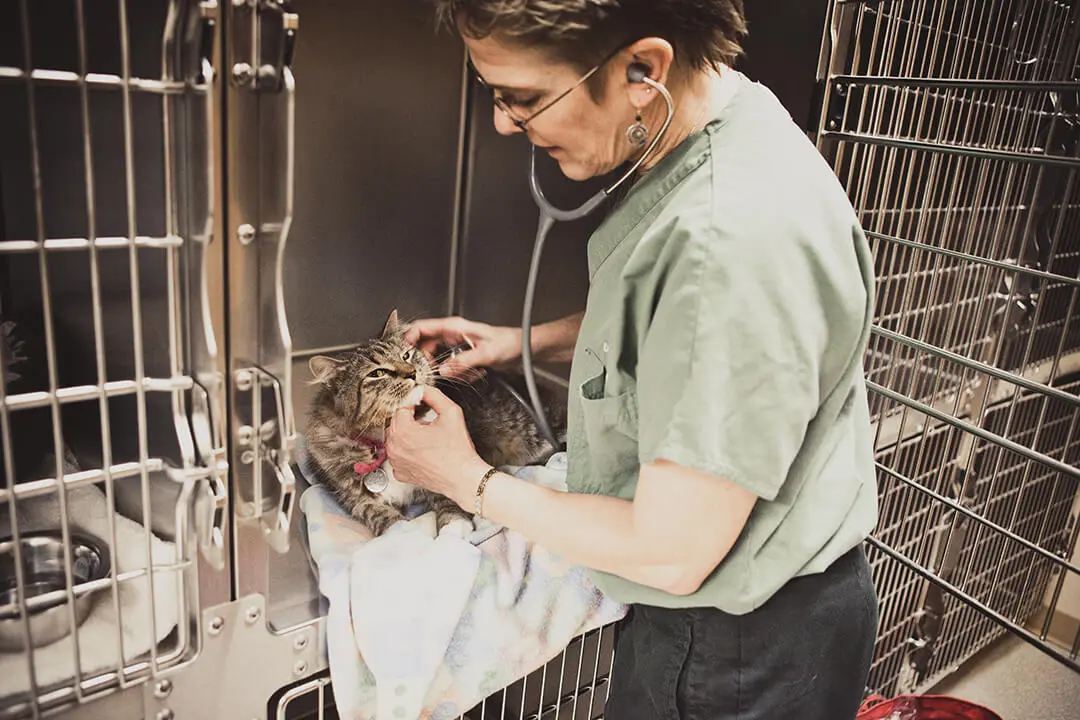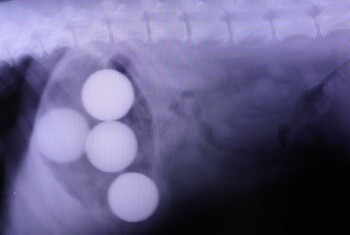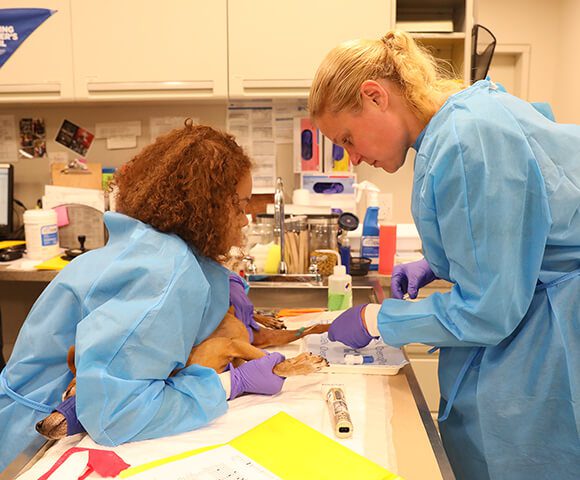Feline stomatitis: Diagnosis, treatment and prognosis.
Oral health is a very important factor in a pet’s quality of life and can affect overall health.
While making an important commitment to your pet’s oral care, please be aware that each patient is different, and we will do our best to determine a treatment plan during your initial visit.
What is stomatitis?
 Technically, the word stomatitis simply means inflammation (itis) of the cavity (stoma). In this case, we are referring to the oral cavity (mouth), and in the case of cats, we are referring to a specific condition that leads to severe oral inflammation and pain.
Technically, the word stomatitis simply means inflammation (itis) of the cavity (stoma). In this case, we are referring to the oral cavity (mouth), and in the case of cats, we are referring to a specific condition that leads to severe oral inflammation and pain.
Stomatitis is a very complicated condition; however, we do know that it appears to be a hypersensitivity to plaque. For an unknown reason, the immune system over-reacts to the components of plaque or calculus (tartar) and creates significant inflammation, ulceration and pain wherever plaque is found. In some cases, the pain extends throughout the whole mouth. Imagine having canker sores throughout your whole mouth every day of your life!
How can stomatitis be treated?
Unfortunately, since stomatitis does not have a specific known cause, it is very difficult to treat. Many patients are treated with antibiotics and/or steroids in an effort to control infection and pain; however, since nothing is being done to address the plaque, the disease condition worsens again as the medications are stopped.
Furthermore, traditional medical therapies become increasingly less effective with repeated use and ultimately are not  enough to control this disease. Effective plaque control (i.e. brushing and professional cleanings) may be helpful in some cases; however, it is difficult enough to keep plaque from accumulating on our teeth, let alone our cat’s teeth.
enough to control this disease. Effective plaque control (i.e. brushing and professional cleanings) may be helpful in some cases; however, it is difficult enough to keep plaque from accumulating on our teeth, let alone our cat’s teeth.
Since even minute amounts of plaque can result in significant inflammation, and we cannot get rid of the plaque entirely, we are left with one intimidating solution – get rid of the teeth. This treatment may, understandably, seem extreme, but know that many of these cats feel better the night of surgery.
The term “full mouth extraction” can have slightly different meanings, depending on the condition of the teeth and location of inflammation. In most cases, we extract all of the premolars and molars (the cheek teeth) and leave the incisors and canines. However, in some cases, the term is very literal, and we end up extracting all of the teeth.
Would you rather be toothless or have a mouth full of canker sores caused (in part) by your teeth? It is important to know that you may find reports of alternative therapies on the internet claiming great success in treating stomatitis. Unfortunately, most of these cases are single reports and after clinical trials, these treatment protocols have not proven to be effective.
How will my cat eat without their teeth?
 Chances are, your cat is not currently using his or her teeth; he or she is choosing to swallow food whole instead of crunching kibble against painful gums. Amazingly, many of these cats go home and eat the same night of surgery. In fact, after the healing period, when softened food is recommended, many cats return to eating dry food. With the majority or all of the inflammation alleviated from the extractions, most cats recover completely with no eating problems. Most clients are amazed at their cat’s recovery and change in overall quality of life.
Chances are, your cat is not currently using his or her teeth; he or she is choosing to swallow food whole instead of crunching kibble against painful gums. Amazingly, many of these cats go home and eat the same night of surgery. In fact, after the healing period, when softened food is recommended, many cats return to eating dry food. With the majority or all of the inflammation alleviated from the extractions, most cats recover completely with no eating problems. Most clients are amazed at their cat’s recovery and change in overall quality of life.
What is the prognosis associated with stomatitis?
The frustration with this disease is that we can never say there is a cure; rather we are managing the condition. However, with full mouth extractions, two thirds of cats experience a “clinical cure,” meaning no additional care is necessary (beyond routine dental care for any remaining teeth). The remaining 33% of cats may need additional support. Oral gels, further extractions and finally, if the extractions have not been effective, antibiotics and/or immunosuppressive drugs can be used to help manage this condition. Many cats do well with these supportive measures.
This condition can be very frustrating, especially in the population of cats that are hard to manage. It is important to be prepared as it can take a significant emotional, financial and time commitment.


